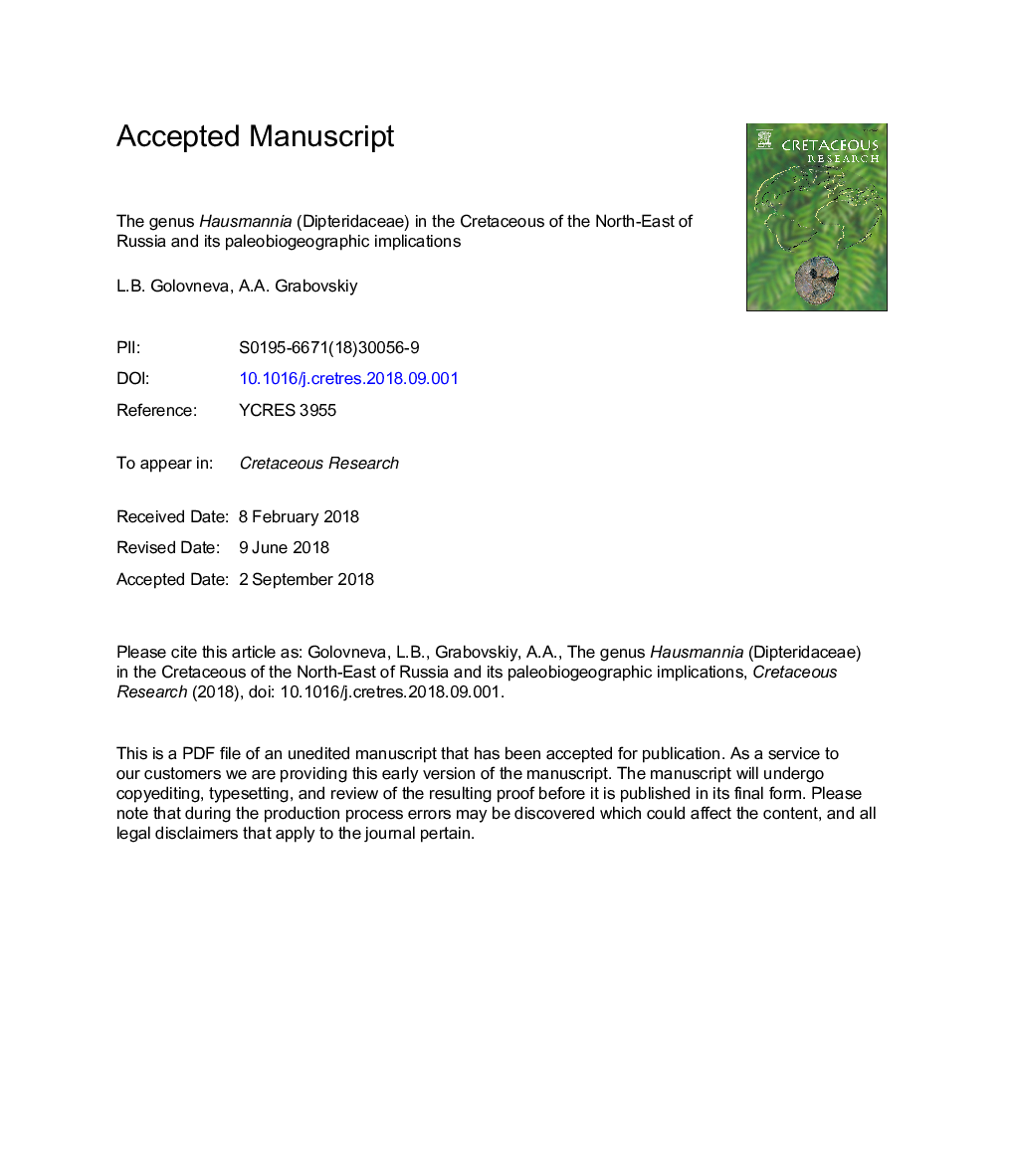| Article ID | Journal | Published Year | Pages | File Type |
|---|---|---|---|---|
| 10149887 | Cretaceous Research | 2019 | 32 Pages |
Abstract
The genus Hausmannia disappeared at end of the Early Cretaceous in most regions of the Earth, but in the North-East of Russia this genus was abundant during all the Late Cretaceous and even persisted into the Paleocene. In the Late Cretaceous the genus Hausmannia was represented by three endemic species: H. bipartita Samylina and Shczepetov (early Albian-Santonian), H. dublicato-crenata Samylina (Santonian-early Campanian) and H. olaensis Golovneva and Grabovskiy, sp. nov. (Santonian-early Campanian). A leaf fragment from the Paleocene Rarytkin Formation was determined only as Hausmannia sp. A high abundance of Hausmannia in the North-East of Russia was probably related with relict types of plant communities, dominated by Sphenobaiera, Baiera and Phoenicopsis, which survived in the highlands of the Okhotsk-Chukotka volcanic belt and its surroundings.
Related Topics
Physical Sciences and Engineering
Earth and Planetary Sciences
Palaeontology
Authors
L.B. Golovneva, A.A. Grabovskiy,
